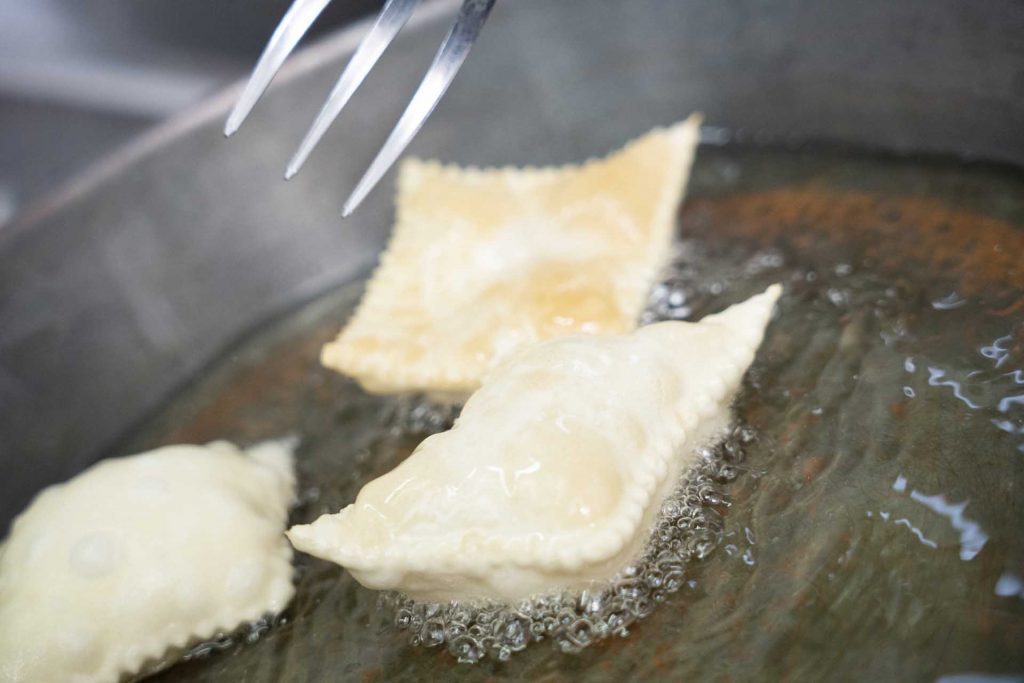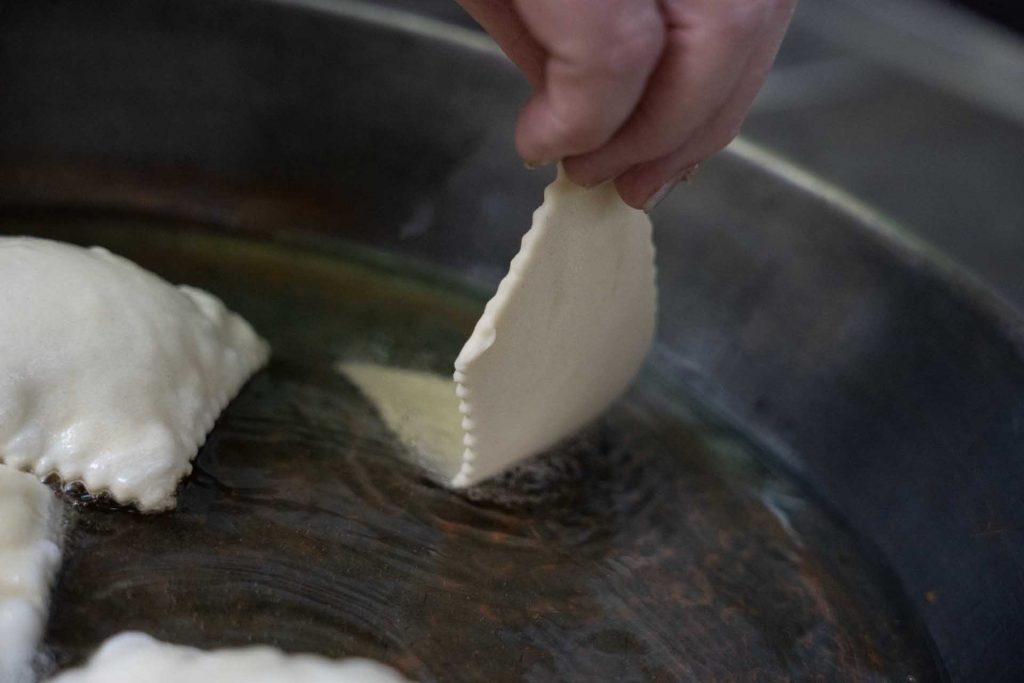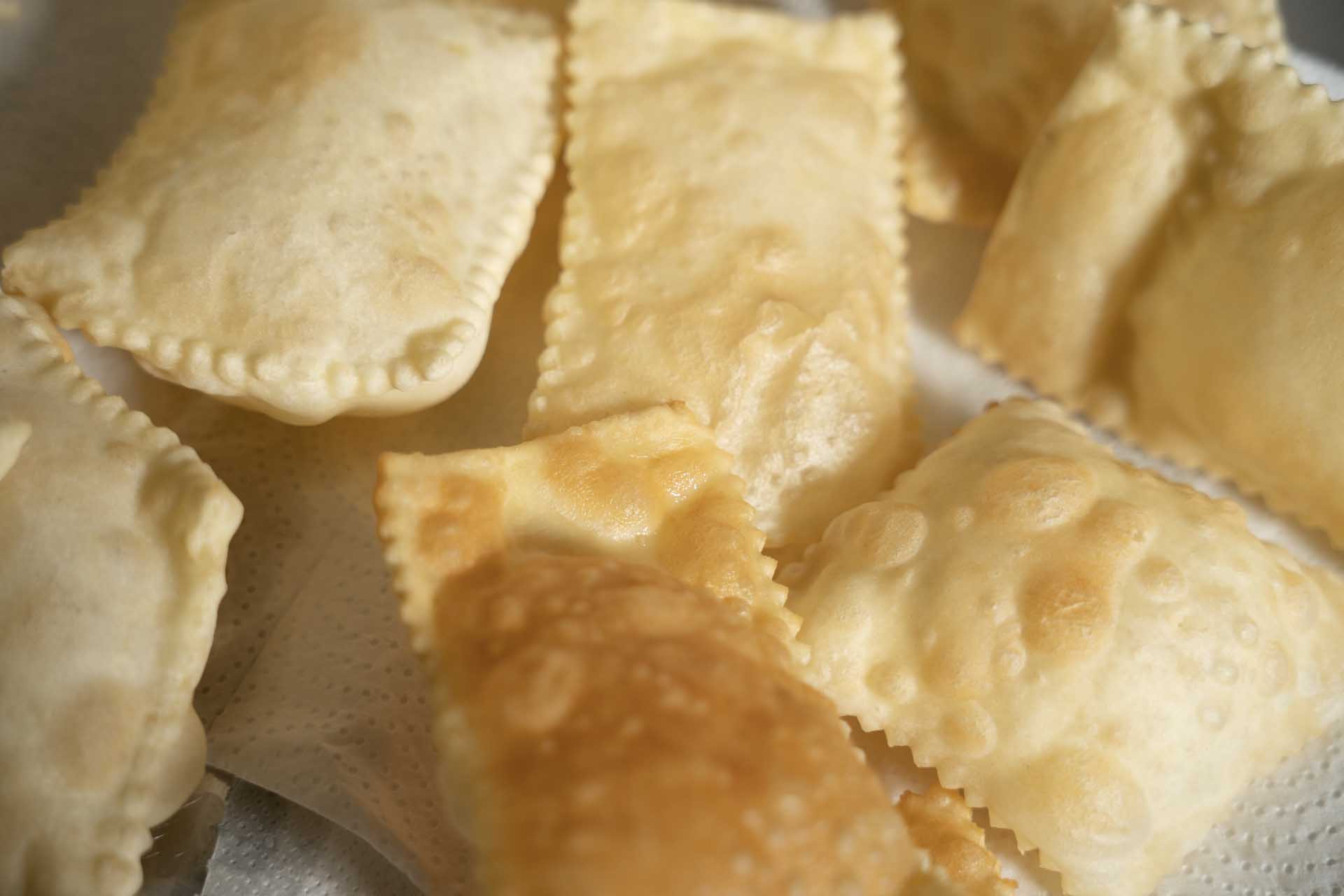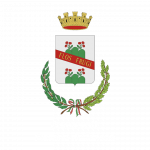A traditional classic, whether for lunch, dinner or breakfast
GNOC FRÈTT, BETWEEN CURIOSITY AND HISTORY
The origins of the gnocco fritto, a true classic of Modenese culinary tradition, can probably be traced back to the historical period before the fall of the Western Roman Empire, when the Lombards arrived in Italy around 568 AD. The history of this dish owes its roots to the barbarian contaminations in Emilia around the 6th century, in a historical period that saw the Germanic populations influence the gastronomy of Emilia and not only, in this case, with the introduction of lard, one of the main ingredients in its preparation. This particular type of bread then spread throughout the Emilia Romagna region until it became a staple in the breakfasts and winter meals of the poorest local farmers. The historic arrival of the Lombards in Italy thus transformed the culinary tradition of Emilia Romagna, contaminating the ingredients that form the basis of its various typical products.
Gnocc frett, al gnocch frètt, ‘l gnoc: there are several versions in dialect to call gnocco fritto, a variant widespread more in the provinces of Modena and Reggio Emilia, the small but very tasty morsel of fried dough served hot and fragrant. The original recipe is registered with the Chamber of Commerce of Modena and includes both compulsory and optional ingredients. According to the Confraternita del Gnocco d’Oro, only flour, sparkling water, salt and lard. No yeast. It swells naturally thanks to the effect of carbonated mineral water. Also, no oil in frying, only lard. In some cases, eggs or milk may be added to the dough to soften it. Find out in the recipe what are the secret ingredients of our Maranello rezdore.

THE MODENESE ORIGINAL RECIPE: THE TRADITIONAL GNOCCO FRITTO ACCORDING TO THE REZDORE
Gnocco fritto of Modena’ is widely regarded as the variant that most conforms to the original version, and is often eaten in place of bread. As we have said, it is a preparation made from a few simple ingredients such as flour and water, but some also add eggs or milk to the dough. The dough is then rolled out with a rolling pin and cut into diamond shapes or rectangles of about 10-15 cm, which are then fried in boiling lard, eaten immediately piping hot or reheated for breakfast and dunked in milk in the morning after serving them at a dinner party with friends.
In the countryside of these areas gnocco fritto was only made when there was no wind, a necessary condition for a good dough and perfect frying. The dough was cut into large rounds with a diameter of about 25 cm, and a hole was made in the centre to make them turn better in the pan. Then it was served for breakfast, together with a plate of fried eggs. It was the perfect mix that gave the farmers the right energy to start working the fields and milking the cows. Instead, the children took it to school to eat as a snack along with jam or gave it to the children of the gentlemen who coveted it by giving their sandwich in exchange.


Ingredients for 6 people
- 1 kg Type 0 flour
- 1 egg
- 1 hg stracchino (fresh cheese)
- Sparkling water at room temperature
For frying
- Lard to taste


Dough Method
Pour the flour onto a pastry board or into a bowl in the classic fountain shape, together with the egg and stracchino and mix thoroughly. Then knead with room temperature sparkling water until the mixture is soft and elastic. Roll out with a rolling pin and cut with a pastry cutter into diamond shapes or rectangles of about 10/15 cm, or any size you like.
Cooking
Melt the lard in a low, wide frying pan and wait until it is hot. Plunge the diamond-shaped pieces, lower them with the ladle below the surface, and then let them rise and thus promote swelling. Let them cook for about two minutes. If they turn by themselves, then you have prepared a gnocco fritto to perfection, otherwise, keep practising with our recipe!










